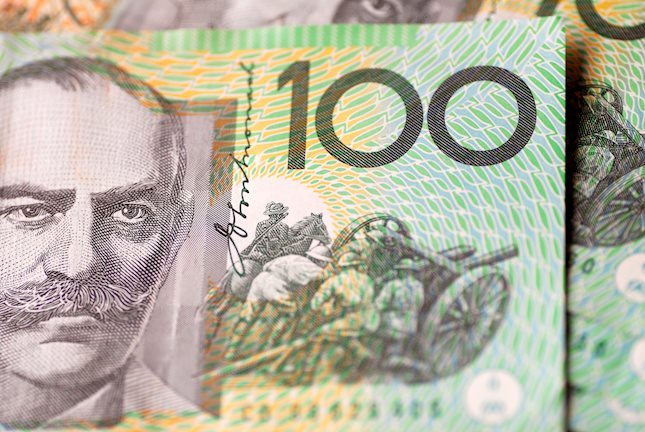A mixture of macro fears for inflation and concerns about what the next Trump presidency may hold are dominating markets as we move to the middle of the week. The sell off in stocks in the US was driven by strong economic data, including a rise in job openings and the highest level of the ISM services prices paid index since early 2023. This has rattled financial markets. On top of this, President elect Trump doubled down on his tariff talk in a wide-ranging speech on Tuesday evening, eroding hopes that he will tread a more cautious path.
Bond market sell-off could continue
The start of 2025 has seen a surge in bond yields, particularly in longer dated bonds, which have sold off sharply. In the past week, 10-year and 30-year Treasury yields have risen by more than 10 bps each, while 2-year yields have risen by 3 bps. In Europe, the sell off has been just as extreme, with January seeing a rout across the curve. Rising inflation in the currency bloc has pushed up bond yields, particularly in Germany and France. The market has scaled back some of their expectations for rate cuts from the ECB in the coming year on the back of rising inflation pressures. Bets on a large rate cut from the ECB next month have fallen back, while the market has slightly increased its expectation of where interest rates will end the year, they now think it will be 1.9%. However, bond market dynamics may not get in the way of European stocks making a comeback in the medium term. Citi’s Economic Surprise Index for the Eurozone has picked up in recent weeks and is close to its highest level since November. If this continues, then we could see European stocks outperform their US counterparts in the longer term. However, in the short term, we expect some fallout from the rout in US stocks and Trump’s tariff talks on Wednesday. Futures markets are pointing to a lower open for both the FTSE 100 and the Eurostoxx 50 index later this morning.
Ozempic gets caught in a diplomatic storm
The volatility of the Trump era has arrived, even though he won’t be officially sworn into office for another 2 weeks. In a wide-ranging speech on Tuesday, President-elect Trump stated his desire to own Greenland, currently a Danish territory. He also threatened to take control of the Panama Canal and for Canada to become the 51st state of the USA. The immediate market impact has seen Novo Nordisk, the Danish pharma giant who manufactures Ozempic, the anti-obesity drug, fall more than 2%. This stock is at its lowest level since mid-2023, and its demise could favour Eli Lily, the US maker of a rival drug to Ozempic. This is a sign that under the second Trump presidency, geopolitical tensions could have a broad impact on financial markets.
China FX intervention weighs on the Dollar, as countries fight back against Trump’s tariff talk
In the FX market, there was initially a swing back to the dollar, however, there has been a wave of dollar selling overnight. China boosted support for the yuan, which has tempered some of the dollar strength. The yuan initially sank on the back of Trump’s tough talk on tariffs, however, the Chinese authorities set a higher-than-expected reference rate on Wednesday, which suggests that Beijing will keep tight control of its currency as President Trump prepares to reenter the White House. This could add to volatility in the FX market, as we doubt China will be the only country to do so.
FOMC Minutes to suggest gradual moves from Fed
Ahead today, FOMC minutes and the US ADP employment report will be worth watching. The market mood is priced for a hawkish reading of tonight’s Fed minutes. We expect them to show a balance of risks to inflation and the labour market, and to double down on their gradual approach to rate cuts. If we are correct, then it may temper some of the selloff in the Treasury market.
In the UK, yields are rising on the back of some large Treasury auctions. The surge in 30-year yields to their highest level since 1998, could put pressure on the BOE’s quantitative tightening programme, and all eyes will be on next month’s BOE meeting. It also increases UK economic uncertainty, as there may be pressure on the Chancellor to hike taxes or curtail public spending. We think that the market is pushing for the latter since business and consumer confidence will likely only weaken further if the Chancellor raises taxes once more. The real test for market sentiment to UK assets could come next week when the December CPI report is released. This will be a major event for the Gilt market, as it may heighten fears about stagflation.
Nvidia reminds us it’s an incredibly volatile stock
Elsewhere, Nvidia weighed heavily on the S&P 500 after it slid more than 6% on Tuesday. The main driver was concern about a lack of detail on the company’s new Blackwell chip during Nvidia CEO Jensen Huang’s speech at the CES conference, the biggest tech conference in the world. Nvidia pulled back sharply after reaching a record high on Monday. This tells us two things: 1, Nvidia is still as volatile a stock as ever, and it does not always move higher in a straight line, and 2, the market does not have a clear driver right now. The factors that are driving the S&P 500 this year have shifted. Momentum and growth had been powerful drivers of the S&P 500’s rally in 2024, they have now reversed, and momentum and growth weighed heavily on the index on Tuesday, with value shares outperforming. It’s too early to know if this is a trend, but it is definitely something to watch.
CFD’s, Options and Forex are leveraged products which can result in losses that exceed your initial deposit. These products may not be suitable for all investors and you should seek independent advice if necessary.
Recommended Content
Editors’ Picks

AUD/USD keeps the red near 0.6200 after Chinese inflation data
AUD/USD keeps losses near the 0.6200 mark following mixed Australian data and as expected China's inflation numbers. The RBA's dovish shift and China's economic woes add to the weight on the Aussie as risk sentiment remains tepid. Fedspeak eyed.

USD/JPY: Bears attack 158.00 on strong Japanese wage growth data
USD/JPY drifts lower to test 158.00 early Thursday after data showed that base salaries for Japanese workers increased at the fastest pace in 32 years. The data backs the case for the BoJ to raise interest rates, which, along with the cautious market mood, benefits the safe-haven Yen and drags the pair away from a multi-month top.

Gold price retreats toward $2,650 despite risk aversion
Gold price is retreating from near a monthly high of $2,670 in Thursday's Asian trading. Resurgent haven demand for the US Dollar amid risk aversion weigh on Gold price even as US Treausry bond yields extend pullback. Focus shifts to Fedspeak amid holiday-thinned trading.

Has Bitcoin topped for the cycle? Here's what key metrics suggest
Bitcoin experienced a 2% decline on Wednesday as the cryptocurrency market grapples with recent losses. On-chain data has indicated a shift in the accumulation of the leading cryptocurrency, suggesting that holders are increasingly selling their assets.

Bitcoin edges below $96,000, wiping over leveraged traders
Bitcoin's price continues to edge lower, trading below the $96,000 level on Wednesday after declining more than 5% the previous day. The recent price decline has triggered a wave of liquidations across the crypto market, resulting in $694.11 million in total liquidations in the last 24 hours.

Best Forex Brokers with Low Spreads
VERIFIED Low spreads are crucial for reducing trading costs. Explore top Forex brokers offering competitive spreads and high leverage. Compare options for EUR/USD, GBP/USD, USD/JPY, and Gold.